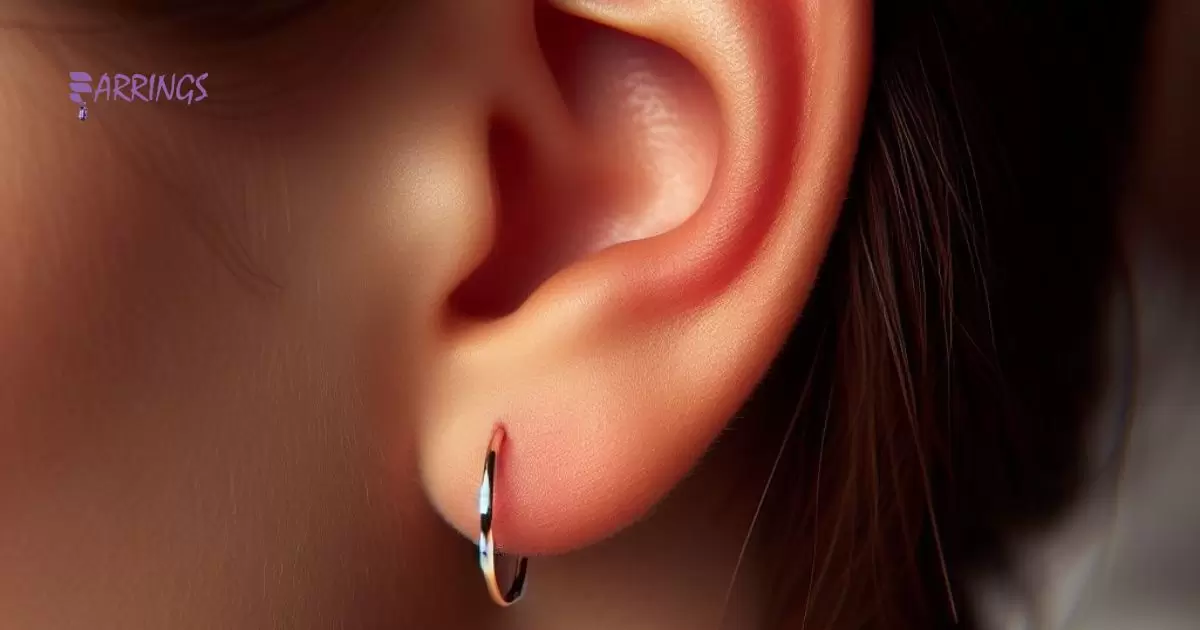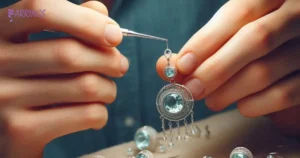It’s generally recommended to wait at least 4-6 weeks before changing new ear piercings. This allows the piercing to heal and close up properly and fully. After 4 weeks, you can carefully remove the initial earring and insert a new one.
Got a new ear piercing and dying to change up your look? Can I Change My Earrings After 4 Weeks? While the temptation to swap out your jewelry may be strong, it’s important to be patient and let the piercing fully heal first.
Read on to learn more about the recommended 4-6 week timeline and proper technique to ensure a safe, comfortable earring change. You’re switching to those 50mm gold hoop earrings or trying out something new, this guide will help you confidently plan your future jewelry swaps.
Key Takeaways
- After 4 weeks, it’s generally safe to change earrings if your piercings have healed well.
- Prioritize cleanliness and gentle handling to prevent infections during earring changes.
- Pay attention to your body’s cues if there’s discomfort, wait before swapping earrings.
- Consult a professional if unsure about the condition of your piercings or the changing process.
The Importance of Proper Ear Piercing Aftercare
Proper ear piercing aftercare is crucial for ensuring a smooth healing process. It begins with keeping your hands clean before touching your pierced ears. To prevent infections, clean the area gently with a saline solution or mild soap and water twice daily.
Avoid swimming pools, hot tubs, and other bodies of water until your piercing is fully healed to prevent infections. Also, avoid sleeping on the side of your newly pierced ear and don’t change earrings too early to ensure proper healing.
How Long Should I Wait Before Changing My Earrings?
When considering changing earrings, timing matters. After getting pierced, it’s crucial to wait for the recommended period before swapping them out. Typically, experts advise waiting at least 4 to 6 weeks before changing earrings.
This waiting period allows your piercing to heal properly, reducing the risk of infection or irritation. Rushing to change earrings too soon can disrupt the healing process and lead to complications. So, patience is key to ensuring your ear piercings heal safely and comfortably.
The Healing Time for Different Types of Ear Piercings?
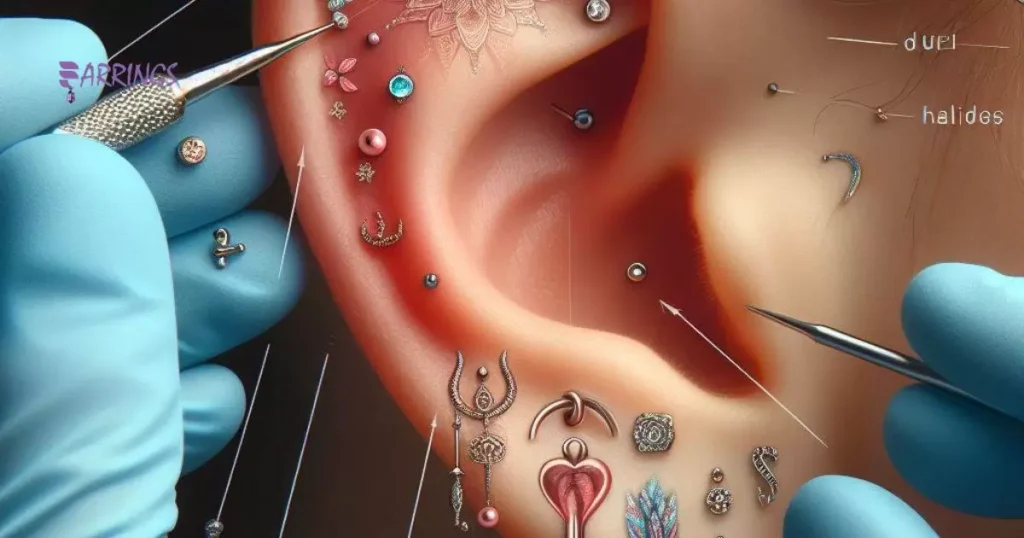
Healing times vary based on the type of ear piercing you have. For standard earlobe piercings, healing usually takes about 4 to 6 weeks. During this time, it’s crucial to keep the area clean and avoid changing earrings too soon to prevent infection.
Cartilage piercings, such as helix or tragus piercings, require more time to heal, typically around 6 to 12 months. Cartilage is less vascular than earlobes, meaning it receives less blood flow, so it takes longer to heal. Be patient and follow proper aftercare to ensure a successful healing process.
Signs That Your Piercing Is Fully Healed
Reduced Swelling: Swelling around the piercing site should diminish significantly. You might notice less redness and tenderness as well.
Absence of Discharge: Fully healed piercings typically won’t produce any discharge. If you no longer see any pus or fluid, it’s a good sign.
No Pain or Sensitivity: Once healed, your piercing shouldn’t hurt anymore. You’ll be able to touch it without feeling any discomfort.
Stable Jewelry: The jewelry should feel secure in the piercing without any movement. If it moves easily, it might not be fully healed.
Normal Skin Color: The skin around the piercing should return to its usual color. If it remains red or irritated, it might still be healing.
Easy Rotation: If your piercing requires rotation, you should be able to do so without any resistance or pain.
Consultation with a Professional: When in doubt, consult with your piercer. They can assess your piercing’s healing progress accurately.
Choosing the Right Materials for New Earrings
Selecting the appropriate materials for your new earrings is crucial for both style and comfort. Opt for hypoallergenic options like surgical stainless steel or titanium to minimize the risk of irritation. Nickel-free metals are also a safe bet for those with sensitive ears, ensuring a comfortable wearing experience.
Consider the aesthetic appeal and durability of the materials. Sterling silver offers a timeless look with added resistance to tarnishing, while gold-plated or solid gold options provide elegance and longevity.
The Risks of Changing Earrings Too Soon?
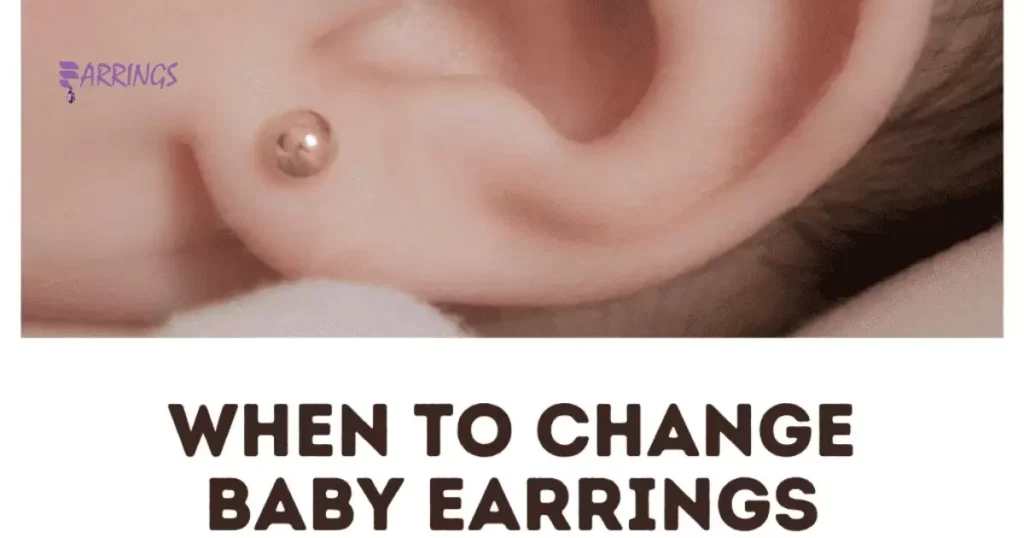
| Risk | Description |
| Infection | Changing earrings too soon can introduce bacteria, leading to painful infections in the piercings. |
| Delayed Healing | Prematurely changing earrings may disrupt the healing process, prolonging recovery time. |
| Irritation | Abruptly switching earrings can cause irritation and inflammation in the pierced area. |
| Allergic Reaction | Introducing new materials too early may trigger allergic reactions in sensitive individuals. |
Changing earrings too soon can lead to various risks for your ear health. When you replace earrings before the recommended healing period, you may disrupt the natural process of tissue recovery. This can cause irritation, inflammation, and even infections due to the disturbance of the healing process.
Premature earring changes can result in the formation of keloids or hypertrophic scars, especially if the piercing site is still healing. These raised scars can be itchy, and uncomfortable, and may require medical intervention to treat effectively.
The Impact of the Piercing Method on Healing Time?
The impact of the piercing method on healing time can vary significantly depending on several factors, including the location of the piercing, the skill of the piercer, the type of jewelry used, and individual differences in healing rates and aftercare practices.
Location of the Piercing: Certain areas of the body are more prone to complications and slower healing times than others.
Skill of the Piercer: A piercer’s expertise and technique can greatly affect the outcome of a piercing. Proper placement and execution reduce trauma to the tissue, which can speed up healing.
Type of Jewelry: The material and design of the jewelry used can impact healing. High-quality materials like surgical-grade stainless steel, titanium, or niobium are less likely to cause irritation or allergic reactions, promoting faster healing.
Individual Healing Factors: Each person’s body responds differently to piercings. Factors such as overall health, immune function, age, and genetics can influence healing time.
Aftercare Practices: Proper aftercare is essential for promoting healing and preventing infections or other complications.
Overall, while the piercing method itself can play a role in healing time, it is just one of many factors that contribute to the overall outcome.
Factors Affecting Healing Time for Ear Piercings
Factors influencing the healing duration of ear piercings include individual differences in healing ability. Each person’s body responds differently to the piercing process, affecting how quickly the piercing heals.
The location of the piercing on the earlobe or cartilage can impact healing time as cartilage piercings typically take longer to heal than earlobe piercings due to lower blood flow. Proper aftercare plays a crucial role in the healing process.
Cleaning the pierced area regularly with a saline solution helps to prevent infections and promotes faster healing. Avoiding trauma to the piercing, such as tugging or twisting the earring, is also essential.
Role of Aftercare in Expediting Healing
Aftercare plays a crucial role in the healing process of freshly pierced ears. Proper aftercare routines involve cleaning the pierced area regularly with a saline solution to prevent infection. It’s essential to avoid touching or twisting the earrings during the healing period to minimize irritation.
Ensuring good hygiene practices, such as washing hands before touching the earrings or the pierced area, can significantly aid in preventing infections. Following any specific aftercare instructions provided by the piercer is essential for optimal healing.
The Advantages of Ball Stud Earrings for New Piercings?
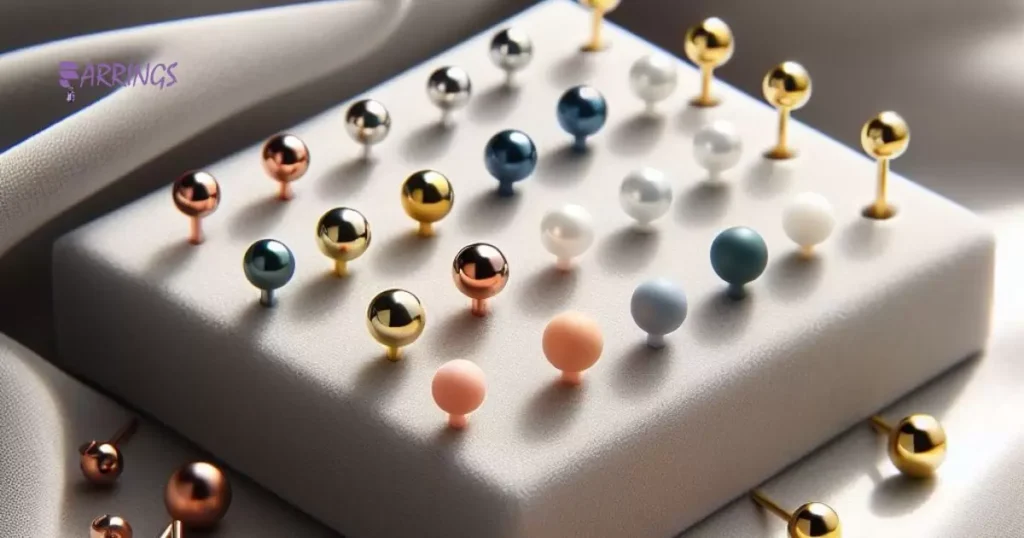
Ball stud earrings offer several advantages for new piercings. Firstly, their spherical shape minimizes the risk of snagging on clothing or hair, reducing irritation to the piercing site. This can promote faster healing and prevent complications.
Ball stud earrings typically have a smooth surface, which helps to prevent bacteria buildup and reduces the likelihood of infection. Their simple design also makes them versatile and suitable for various occasions, from everyday wear to special events.
Overall, choosing ball stud earrings for new piercings can contribute to a comfortable and trouble-free healing process, allowing you to change your earrings with confidence after the recommended 4-week period.
Claire’s Change Earrings After 3 Weeks
If you’ve recently had your ears pierced at Claire’s, you might be wondering when it’s safe to change your earrings. After three weeks, it’s generally safe to switch out your earrings for new ones. This timeline allows your piercings to heal properly without risking infection.
When changing your earrings, be sure to handle them with clean hands to prevent introducing bacteria. Gently remove the current earrings and clean both the earrings and your earlobes with saline solution. Then, carefully insert the new and big earrings, ensuring they fit snugly but comfortably.
Frequently Asked Questions
Can I take my earrings out after 4 weeks to clean?
Yes, it’s safe to remove your earrings after 4 weeks to clean them and your earlobes with saline solution for proper hygiene and maintenance.
Can I remove the earrings after 1 month?
Yes, after one month, it’s generally safe to remove your earrings but ensure your piercings have healed properly before doing so to avoid complications.
Can I wear hoop earrings after 4 weeks?
Yes, wearing hoop earrings after 4 weeks of getting your ears pierced is generally safe, as long as your piercings have healed well and you handle the hoops gently during insertion.
Conclusion
The question can I change my earrings after 4 weeks has a straightforward answer. Generally, it is safe to change earrings after this period, especially if you’ve been diligent in caring for your piercings.
It’s essential to handle the process with care, ensuring cleanliness to prevent infections. Everyone’s healing process may vary slightly, so pay attention to how your piercings feel. If there’s any discomfort or redness, it might be best to wait a little longer before switching earrings.
